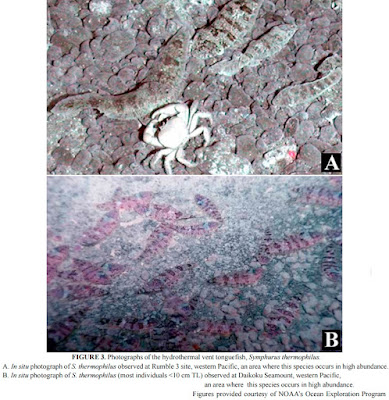 |
Figure 2: Palaeoamyda messeliana SMF ME 1211.
(A) articulated skeleton in dorsolateral view. (B) outline of the carapace and lateral plastral elements in dorsolateral view. (C) close-up of the right hindlimb. (D) close-up of the tail. (E) close-up of the right forelimb.
Abbreviations: co, costal bone; hyo, hyoplastron; hyp, hypoplastron; ne, neural bone; nu, nuchal bone.
|
Abstract
Background
Abundant pan-trionychid (soft-shell) turtles specimens have been found in Eocene sequences of central Europe, particularly from two localities in Germany, the Messel Pit (a UNESCO World Natural Heritage Site) and Geiseltal, traditionally attributed to Trionyx messelianus or Rafetoides austriacus. Over the last two decades new specimens of this taxon from these two localities have been discovered and fully prepared. However, they have remained unstudied, as well as their phylogenetic position inside Pan-Trionychidae is unknown.
Results
Five new specimens of Palaeoamyda messeliana nov. comb. from Messel Pit and Geiseltal localities are fully described here. A revised diagnosis for the species is also presented here, together with its inclusion in a phylogenetic analysis of Pan-Trionychidae that shows that this species is sister to the extant Amyda cartilaginea, one of the most abundant pan-trionychid (soft-shell) turtles from Asia, both members of the clade Chitrini. The specimens described in here are among the best and most complete fossil pan-trionychid skeletons so far known.
Systematic Paleontology
TESTUDINES Batsch, 1788
CRYPTODIRA Cope, 1868
PAN-TRIONYCHIDAE Sensu Joyce, Parham & Gauthier, 2004
Palaeoamyda nov. gen.
Etymology: A fossil version of the extant genus Amyda, based on the important similarities between these two genera.
Type species: Palaeoamyda (orig. Trionyx) messeliana nov. comb. (Reinach, 1900).
Included species: Palaeoamyda messeliana nov. comb.
Diagnosis: Same as for the type species, Palaeoamyda messeliana nov. comb.
Palaeoamyda messeliana nov. comb. (Reinach, 1900)
Revised diagnosis: Palaeoamyda messeliana nov. comb., shares the following synapomorphies with Pan-Trionychidae: contribution of the jugal to the upper temporal emargination, loss of a contribution of the fused premaxilla to the external nares, absence of carapacial and plastral scutes, the absence of pygal bones, sculpturing pattern that covers all metaplastic portions of the shell bones, V-shape entoplastron. Palaeoamyda messeliana nov. comb. shares with Trionychinae the following synapomorphies: a nuchal bone at least three times wider than long, complete absence of peripheral bones, neural series always containing at least one reversal of neural orientation, and a short bridge. Inside Trionychinae (sensu Meylan, 1987), Palaeoamyda messeliana nov. comb. resembles members of Chitrini in particular Amyda cartilaginea by: having a hypoplastron having only one processus hypoplastrales medialis posterior, a pair of processus cardinus masculi anterior, and a very short processus hypoplastralis medialis anterior, a narrow and well developed metischial process of ischium, a very advanced temporal emargination reducing the area of exposure of parietals at the roof top of the skull. Differs from other chitrinins by the following plesiomorphies: costals 7 having a medial contact between each other for half of more of their total medial margin, a shallow medial notch at the anterior margin of nuchal, seven neurals, with the neural reversal of orientation at neural 6. Potential autapomorphies of Palaeoamyda messeliana nov. comb., suggested by Karl (1998) brachial horn II with several ossifications, triturating surface completely flat or with solid symphyseal notch, entoplastron having acute angle and being straight at symphysis.
Taxonomic history
Trionyx messelianus Reinach, 1900
Trionyx messelianus var. lepsiusi Harassowitz, 1919
Trionyx (Amyda) messelianus var. kochi Hummel, 1927 (new combination)
Rafetoides austriacus Karl, 1997 (junior synonym).
Localities and horizons: SMF ME specimens were collected in the Messel Pit, near Darmstadt, Germany, middle Eocene (early Lutetian, MP11, ∼47 Ma) (Lenz et al., 2015). WDC specimen was collected in Geiseltal locality, Saxony-Anhalt region, Germany. The age for this locality is middle Eocene Haubold & Hellmund (1998). However, not specific information about the horizon or any other details of the collection are known.
Edwin Cadena. 2016.
Palaeoamyda messeliana nov. comb. (Testudines, Pan-Trionychidae) from the Eocene Messel Pit and Geiseltal localities, Germany, Taxonomic and Phylogenetic insights.
PeerJ. 4:e2647. DOI:
10.7717/peerj.2647



































